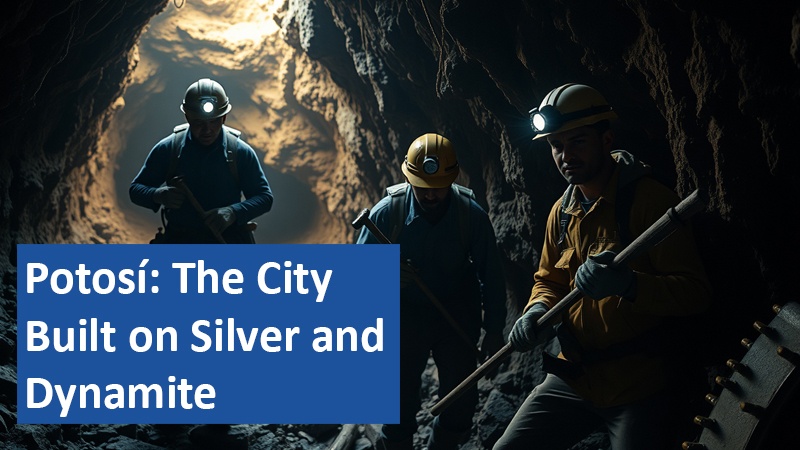
Potosí, a city in the Bolivian Andes, was once one of the wealthiest cities in the world. Today, it grapples with the consequences of centuries of mining while offering tourists a unique glimpse into its turbulent history.
######################################################
Now exclusively try Amazon Prime and Prime Video free for 30 days!
##########################################################
A City with a Tumultuous Past
Situated at an altitude of 13,420 feet, Potosí owes its former riches to Cerro Rico, a mountain abundant with silver. In the 16th century, silver mining made the city the wealthiest in the world, financing the Spanish colonial empire. However, this wealth came at a terrible cost: millions of indigenous and African forced laborers lost their lives in the mines.
Present-Day Challenges
Today, Potosí is one of Bolivia’s poorest cities. Cerro Rico is still mined, primarily for tin and other minerals. Approximately 9,000 miners work under hazardous conditions in the mines. The city struggles with the effects of environmental pollution and the instability of the mountain, which has been hollowed out like Swiss cheese after centuries of mining.
A Unique Tourist Attraction
Despite, or perhaps because of, its grim history, Potosí has become an unusual tourist destination. Visitors can take guided tours through active mines. A peculiarity: tourists often bring gifts for the miners – including dynamite and high-proof alcohol, which are freely available in Potosí. This practice is controversial as it further exacerbates the dangerous working conditions of the miners.
Cultural Heritage and UNESCO World Heritage Site
Despite its challenges, Potosí preserves a rich cultural heritage. The city’s colonial architecture, with magnificent churches and public buildings, testifies to its former wealth. In 1987, the historic center of Potosí was declared a UNESCO World Heritage Site, underscoring the city’s historical significance and contributing to the preservation of its unique architecture.
Looking to the Future
As Potosí grapples with its past, the region offers new opportunities. The nearby salt flats contain the world’s largest lithium deposits – a coveted raw material for electric car battery production. This could open up new economic opportunities for Bolivia, but it also evokes memories of colonial-era exploitation. The challenge will be to develop these resources sustainably and for the benefit of the local population.
Potosí stands as a symbol of Latin America’s complex history – from colonial wealth to modern poverty. The city offers visitors a unique insight into the past and the current challenges of mining. At the same time, it raises important questions about sustainable development and responsible management of natural resources. The future of Potosí will depend on how it manages to preserve its historical heritage while developing new, sustainable economic sectors.
What do you think about Potosí’s past and future? Share your thoughts in the comments!
Based on content from www.cnn.com and additional research